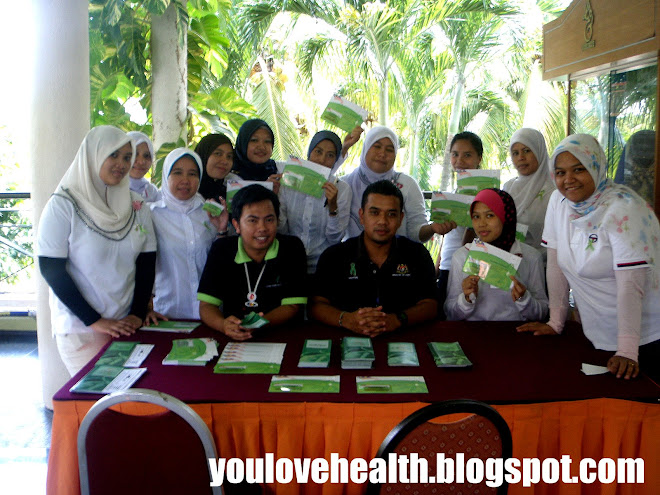http://shine.yahoo.com/channel/health/7-secrets-your-bodys-trying-to-tell-you-501265/
Did you know that your sense of smell or finger length could affect your future health? Neither did I, but scientists are discovering that certain physical traits could indicate an increased risk of conditions such as Alzheimer’s disease, diabetes, and cancer. If any of these apply to you don’t panic—just take a few precautions:
1. Finger length
Women whose index fingers are shorter than their ring fingers may be twice as prone to osteoarthritis in the knees, found British researchers. Those with this predominately male characteristic tend to have lower levels of estrogen, which may also play a role in the development of osteoarthritis, say researchers.
Take this precaution: Strengthen the muscles surrounding your knees. While sitting, straighten each leg parallel to the floor 10 times; hold each rep for 5 to 10 seconds.
2. Leg length
If your legs are on the stocky side, you may need to take better care of your liver. In a 2008 study, British researchers found that women with legs between 20 and 29 inches long tended to have higher levels of four enzymes that indicate liver disease. Factors such as childhood nutrition may influence not only growth patterns but also liver development well into adulthood, say researchers.
Take this precaution: Avoid exposure to toxins your liver has to process, which will keep it healthier, longer. Wear a mask and gloves while cleaning or working with any type of harsh chemical. Limit alcohol intake to one 5-ounce glass of wine or 12-ounce bottle of beer daily.
3. Sense of smell
Older adults who couldn’t identify the scent of bananas, lemons, cinnamon, or other items were 5 times more likely to develop Parkinson’s disease within 4 years, according to a 2008 study. The researchers believe that the area of the brain responsible for olfactory function may be one of the first impacted by Parkinson’s disease—somewhere between 2 and 7 years prior to diagnosis.
Take this precaution: Pop a fish oil supplement. Omega-3 fatty acids can boost your brain’s resistance to MPTP, a toxic compound responsible for Parkinson’s.
4. Arm length
Have a hard time touching your toes (even though you're flexible)? Women with the shortest arm spans were 1.5 times more likely to develop Alzheimer’s disease than those with longer reaches, found a recent study. (Find yours by spreading your arms parallel to the floor and having someone measure fingertips to fingertips; the shortest spans were less than 60 inches.) Nutritional or other deficits during the critical growing years, possibly responsible for shorter arms, may also predispose a person to cognitive decline later in life, say Tufts University researchers.
Take this precaution: Put your appendages to good use with a hobby such as painting or pottery. A 5-year study from the Alzheimer’s Disease Center at Rush University Medical Center found that adults who spent the most time engaged in stimulating leisure activities were more than 2.5 times less likely to develop Alzheimer’s disease than those who spent less time challenging their brains.
5. Earlobe crease
Linear wrinkles in one or both lobes may predict future cardiovascular events (heart attack, bypass surgery, or cardiac death). A crease on one lobe raises the risk by 33%; a crease on both lobes increases it by 77%, even after adjusting for other known risk factors. Though experts aren’t exactly sure, they suspect a loss of elastic fibers may cause both the crease and the hardening of arteries.
Take this precaution: Keep your heart healthy in other ways: Slim down, and exercise regularly, which can lower your cholesterol and blood pressure
6. Jeans size
Adults who have larger abdomens in their 40s are up to 3.6 times as likely to develop dementia in their 70s, even if they weren’t overweight, according to a study published in the journal Neurology. One possible reason for the link is that, compared with subcutaneous fat (the noticeable fat that lies just below the skin), visceral fat (the dangerous fat that surrounds the organs) secretes more of the inflammatory hormones that are associated with cognitive decline.
Take this precaution: Eat a portion-controlled Mediterranean-style diet. Research shows that the monounsaturated fatty acids (MUFAs) in foods such as olives, nuts, seeds, avocado, and dark chocolate prevent the accumulation of visceral fat.
7. Calf size
Though it sounds counterintuitive, a French study found that women with small calves (13 inches or less around) tended to develop more carotid plaques, a known risk factor for stroke. The subcutaneous fat in larger calves may pull fatty acids from the bloodstream and store them where they are less of a risk factor, say researchers.
Take this precaution: No need to bulk up your legs, but sip green tea to stay heart healthy. In a study of more than 40,500 Japanese men and women, those who drank five or more cups of green tea every day had the lowest risk of dying of heart disease and stroke.
Live Better Longer!
Quit smoking, and cut back on alcohol and red meat, and get more exercise


















